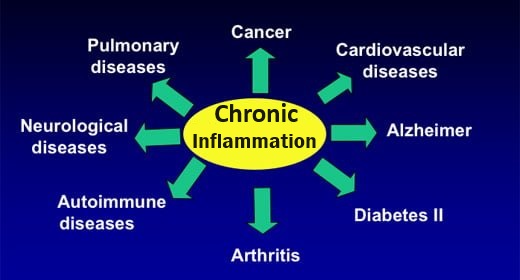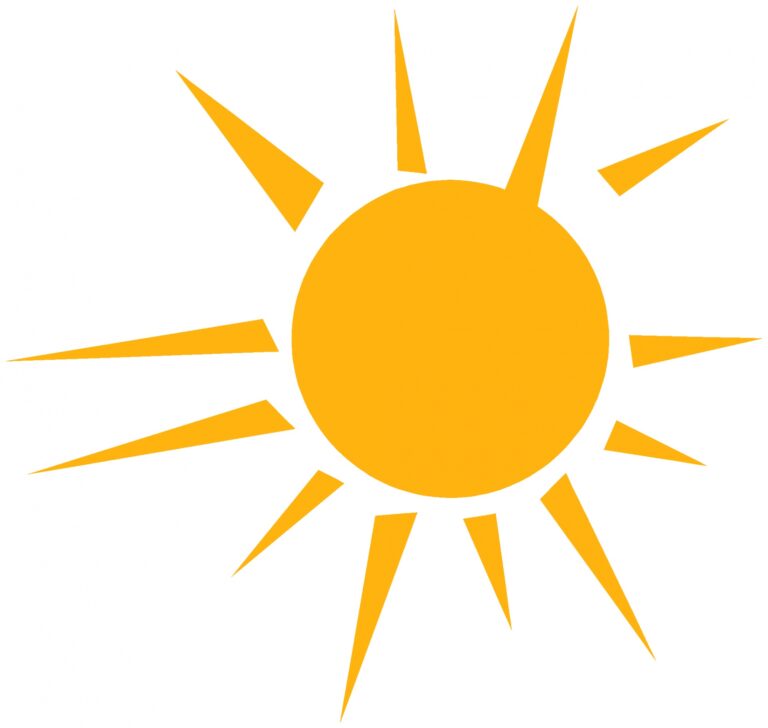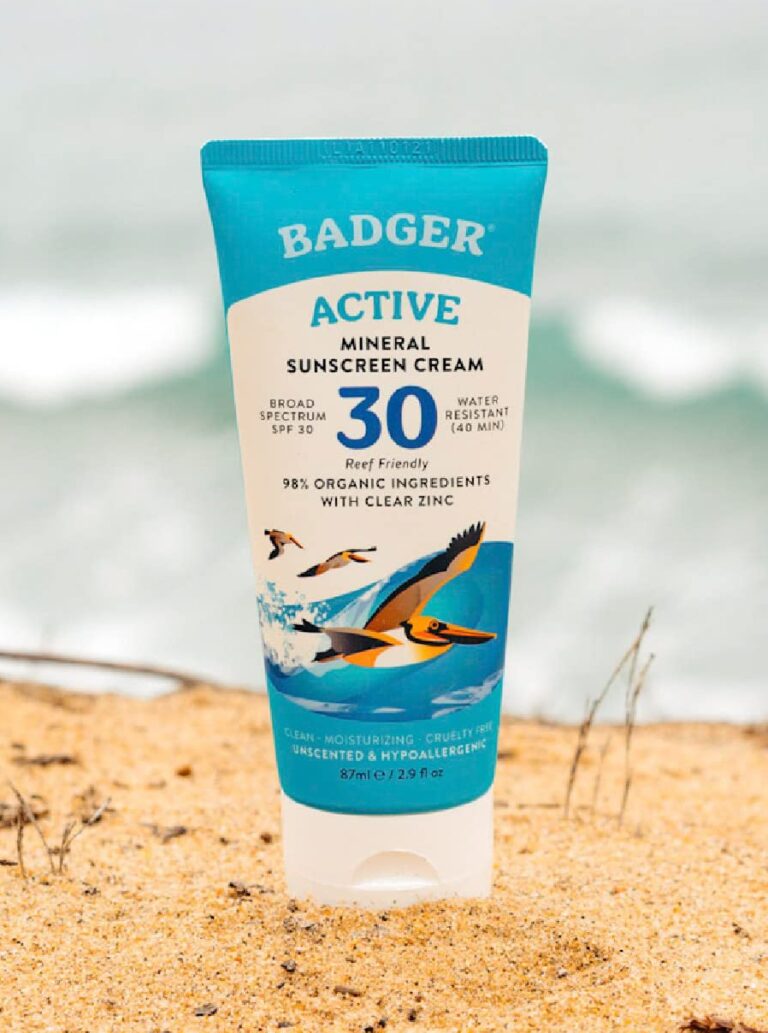UV-A vs UV-B radiation on the skin
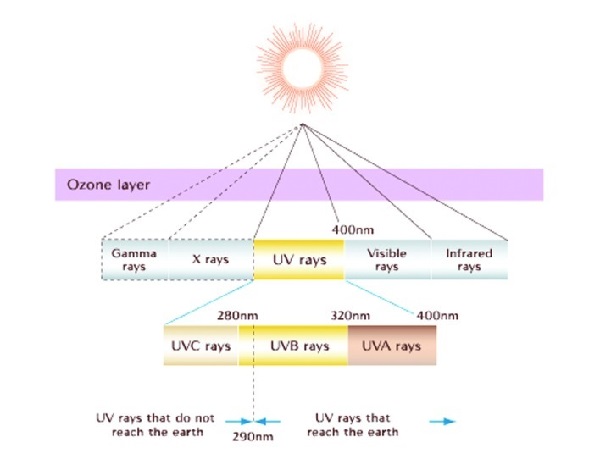
Sunlight provides many health benefits including producing the important antioxidant vitamin D, having a positive effect on our mood via production of the hormone / neurotransmitter SEROTONIN, and promoting wound healing. Ultraviolet rays in the solar spectrum are classified into 3 bands according to their wavelength as UV-A, UV-B and UV-C. Only UV-A and most UV-B reach the earth’s surface. Shorter wavelength UV-B and UV-C is completely absorbed by the ozone layer and atmosphere.
UV-B is known for producing health-essential vitamin D in the skin’s epidermis (its surface layer). UV-A is renowned for having a strong tanning effect. Excessive exposure to either without protective measures, such as broad-spectrum lotions, protective clothing, antioxidants and essential fats can cause DNA damage and mutations leading to skin cancer, the most common being squamous cell and basal cell carcinomas, and melanoma.
Out of the sun, humans are not usually exposed to UV wavelengths > 294 nm
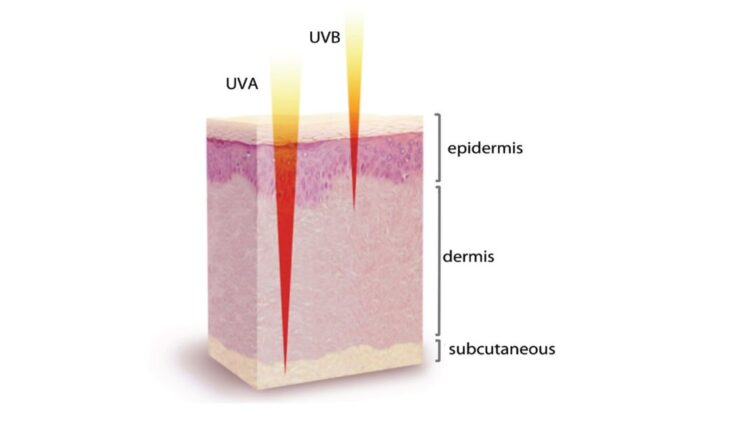
UV-B (280-320 nm) - Vitamin D-making Rays
UVB-penetration
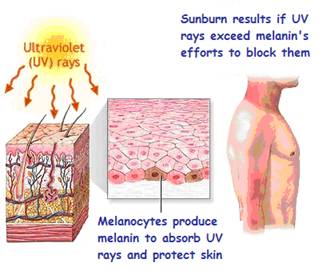
- Latitude. Most of the US is between 30° and 45° latitude, which for several months a year, has insufficient UV-B sunlight to produce optimal D level:
30° (N and S). Insufficient UV-B 2-6 months of the year, even at midday; only Florida and S. Texas are below 30°N in mainland US
40°. Insufficient UV-B during 6-8 months of the year; includes Oregon, Idaho, Wyoming, Nebraska, Iowa, S. Dakota, N. Illinois, Wisconsin, N. Indiana, Michigan, Ohio, Pennsylvania, New York and the New England States;
45° (far N or S). Even summer sun is too weak. Includes most of Washington, Montana, N. Dakota, and northernmost parts of Minnesota, Wisconsin and Maine;
- Altitude. UV-B is stronger at higher altitudes;
- Glass. Only ~5% of UV-B goes through glass;
- Ozone layer, clouds, smog or fog. Full cloud cover decreases UV-B ~50%; stratospheric ozone depletion increases;
- Time of day / Sun’s position in sky – More UV-B rays reach earth at midday than in the morning or evening. When the sun is high in the sky around noon, its rays have a shorter distance to travel through the Earth’s ozone layer to reach the surface of the Earth, which increases amount of penetration by reducing absorption by the ozone layer. Conversely, when the sun’s rays are at an oblique angle early and late in the day, they have a further distance to travel through the ozone layer and have reduced intensity than when rays hit directly. When the sun goes down toward the horizon, UV-B is filtered out.
Beneficial effects of UV-B
UV-B helps skin produce vitamin D3 – a potent defense against melanoma in the epidermis. Melanoma cells convert vitamin D3 to its active form CALCITRIOL, which triggers growth inhibition and apoptotic cell death. (Conversely, research shows that increased UV-A exposures together with inadequately maintained cutaneous vitamin D3 levels will promote melanoma)
- The body’s production of ACTIVE VITAMIN D (CALCITRIOL) from D3 is affected by certain factors: sufficient dietary fat is required; trans fats are inhibitory, as are certain medical conditions, e.g. parathyroid gland or kidney diseases.
Vitamin D – “The Sunshine Vitamin”
Increases MELANIN production (commonly known as a suntan). UV-B stimulates melanocytes (certain skin cells) to produce melanin, a brown protein pigment metabolized from tyrosine, that protects against overexposure to UV-B radiation by absorbing UV energy and dissipating it as harmless heat and also colors the skin. The tan resulting from increasing melanin production takes about two days to develop but is longer-lasting and less harmful than the one obtained from UV-A.
UV-B stimulates production of Melanocyte Stimulating Hormone (MSH). Important in weight loss and energy production.
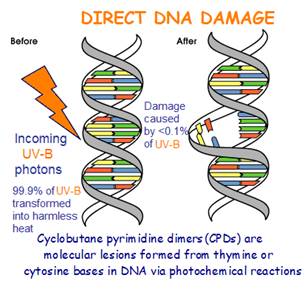
UV-B rays can DIRECTLY damage DNA
UV-B causes DIRECT photodamage when not completely absorbed by DNA nucleobases (the 5 fundamental units of the genetic code – adenine (A), cytosine (C), guanine (G), thymine (T), urasil (U). A, C, G and T are in DNA). DNA is able to efficiently transform >99.9% of the photons into harmless heat (via a photochemical process called internal conversion), but the remaining <0.1% create an excited state that can cause a disruption in the DNA strand (thymine base pairs next to each other in genetic sequences bond together into thymine dimers), which reproductive enzymes cannot copy, potentially leading to mutations.
Prolonged UV-B exposure can cause DNA damage leading to:
- Premature aging
- Increased risk of skin cancer, including basal and squamous cell carcinomas and melanoma (8% of melanoma is attributed to UV-B radiation).
Sunburn is a painful alert that DNA damage from UV-B is occurring to cells. A result of the <0.1% UV-B that DNA did not transform into harmless heat. No such warning is generated from UV-A’s INDIRECT damage.
UV-A (320-400 nm) - Aging / tanning rays
UV-B penetration
95% of UV radiation that reaches us on earth is UV-A. Unlike UV-B, UV-A is not absorbed by ozone.
- UV-A penetrates earth’s ozone layer, atmosphere, clouds, smog
- 70-90% of UV-A can penetrate through glass.
UV-A penetrates into the skin layer below the epidermis, called the dermis
UV-A rays are pretty constant. During all daylight hours throughout the entire year.
UV-A radiation causes INDIRECT, oxidative damage
UV-A’s longer wavelength enables UV-A to penetrate into the dermis (deeper than the skin’s outer layer reached by UV-B) and can damage components within those skin cells. Although UV-A radiation is less energetic than UV-B, prolonged amounts of UV-A can generate reactive oxygen species (ROS), e.g. hydroxyl radical and singlet oxygen, within skin cells, which can cause oxidative damage to (i.e. steal electrons from) lipids, proteins and nucleic acids (chains of nucleotides that store genetic information), including DNA and RNA . Human cells have inherent mechanisms to protect against oxidant damage from exposure to higher UV wavelengths of sunlight, including antioxidant systems glutathione-glutathione peroxidase and thioredoxin and DNA repair mechanisms, but prolonged exposure can overwhelm these systems.
Unlike UV-B, which alerts us to its DNA damage by causing sunburn, UV-A’s damage is pain-free and has no other warning signals, making us oblivious to the damage being wrought by ROS.
- UV-A photons are tanning rays. UV-A oxidizes pre-existing melanin from melanocytes (skin’s melanin-producing cells), which in turn immediately creates the tan color in the skin; tanning beds use UV-A (some also use UV-B). Excessive amounts of UV-A can cause sunburn. Only broad-spectrum suntan lotions absorb or block UV-A rays.
- Can cause some skin cancers. UV-A can cause oxidative stress leading to cancerous mutations when naturally protective mechanisms are overwhelmed. E.g. 92% of malignant melanoma is caused by indirect DNA damage;
- UV-A can break down vitamin D in your skin. previously formed from exposure to UV-B rays.
- UV-A is known for causing premature aging. UV-A can cause photo-aging by damaging collagen and elastin fibers and destroying vitamin A in skin. Actinic (or solar) elastosis is an accumulation of abnormal elastin (elastic tissue) in the skin’s dermis layer (and in the conjunctiva of the eye), as a result of prolonged / excessive sun exposure.
Excited Chromophore* (UV-A + Chromophore ) + 3O2 → Chromophore + 1O2 (singlet oxygen)
1O2 + Intact DNA → 3O2 + Damaged DNA
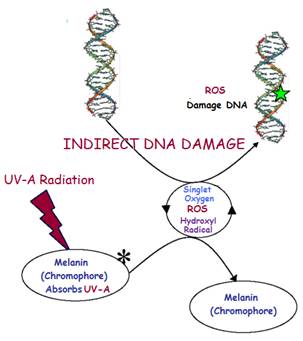
Protective mechanisms against UV-induced oxidative stress in skin cells
UV photons can be DIRECTLY absorbed by:
- DNA
- Chromosomes: present in skin cells.
- Melanin (Chromophores)
- Essential fatty acids (present in skin cell membranes). Omega-3 fatty acids mitigate skin damage caused by UV-B
The skin pigment melanin is a natural “sunscreen”. Melanin, the primary color determinant of skin, hair and eyes, is produced by melanocytes (cells found in the basal layer of the epidermis, eyes, hair, also inner ear, and brain) by UV-B radiation. Melanin is derived from the non-essential amino acid tyrosine.
Melanin is transferred into melanosomes, organelles of the skin’s epidermal cells, where it efficiently absorbs both UV-A and UV-B rays and turns them into harmless heat, thereby protecting nuclear DNA / RNA from potential UV-promoted mutations leading to skin cancer. Melanin is also able to neutralize reactive oxygen species (ROS) providing a protection from oxidative stress.
Melanin is composed of a chromophore (and attached protein) and when UV-A rays excite a chromophore that is unable to quickly convert UV-photon energy into harmless heat, ROS are produced.
Studies show that melanin-rich, dark-skinned people have less incidence of UV-induced DNA damage in skin. However, when those with darker skin are diagnosed with melanoma, it is often at a later stage than fairer skinned people, is more deadly and most is in areas which are not usually exposed to the sun, such as the soles of the feet, palms, inside the mouth and under the nails (where it is more prevalent on the big toe, thumb and index finger, and on the dominant hand).
DNA repair mechanisms
- Body attempts to repair damage – called nucleotide excision repair
- Enzymatic repair mechanisms
Antioxidants:
- Adequate vitamin D levels (dietary or formed in the skin by UV-B rays).
- The adequate presence in the skin of other antioxidants. E.g. vitamin A /retinol, vitamin C, resveratrol and other polyphenols, vitamin B3, vitamin E, CoQ10, and astaxanthin can neutralize ROS.
Essential fats (omega-3 and omega-6)
- Electron clouds of essential fatty acids residing in skin cell membranes resonate with and absorb UV rays
- Omega-3 has an important role in restoring skin damage caused by UV-B. A study exposing mice to UV-B found that Omega-3 in their diet reduced epidermal damage caused by UV-B and suppresses excessive epidermal water loss (UV-B typically disrupts the stratum corneum’s ability to retain water – whose moisture is an anti-inflammatory protection against environmental stress). The stratum corneum is the outermost layer of the epidermis.
- Essential fats produce eicosanoids, potent local “first responders” mediating inflammation in response to skin damage













